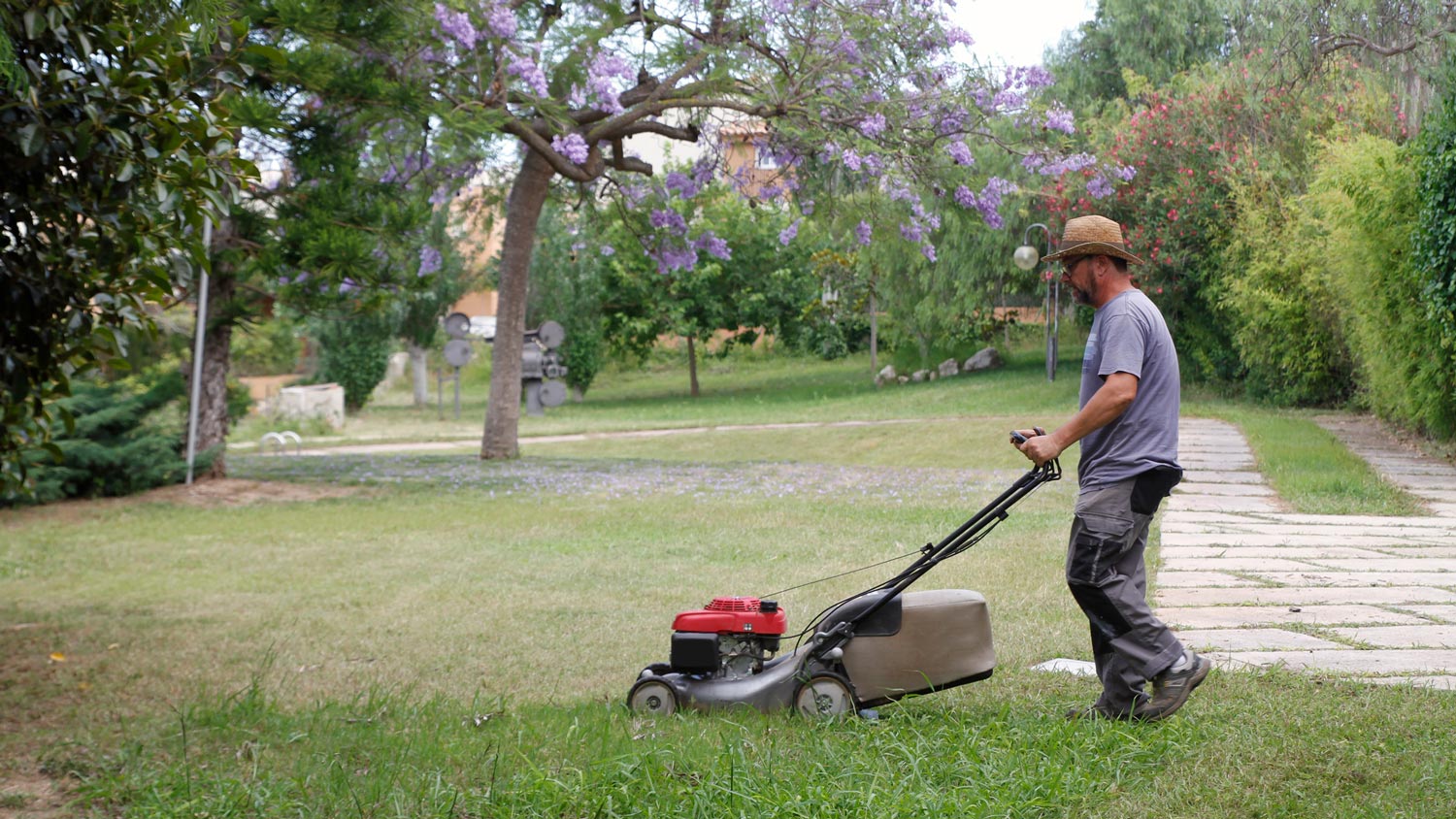
Landscape curbing can really improve the look of a yard, but at what cost? Find out how much it costs and the different ways you can do it
Don’t let the brown get you down


Trying to remove a stump yourself can injure your back, damage underground utilities, and leave behind wood that kills grass.
Lawn treatment experts can keep your grass green and mushroom-free while diagnosing soil problems you might miss.
Most homeowners don’t have a stump grinder, wheelbarrow, or heavy-duty shovels to do the job properly.
Skipping regular fertilization or failing to incorporate nitrogen-rich compost can leave your lawn yellow and patchy.
It’s frustrating to watch your yard decline after you’ve dedicated so much time and hard-earned cash to nurture it. Don’t feel defeated when those blades turn brown. You’re not a bad grass parent—there’s just a lot working against you. Here’s why grass tends to die and what you can do about it.
There’s no perfectly linear method to lawn care. Rather, many variables call for a customized approach. Consider these trouble spots when planning out the care for your lawn.
One of the top culprits of dead grass is improper watering. Too little water will dry out and kill your lawn, while too much will suffocate its roots.
Knowing how often to water your lawn is crucial for success, especially when planting new seeds. Generally, you want to aim for 1 to 1 1/2 inches of water per week, spread out over two or three watering sessions. Newly planted lawns should get watered twice per day with enough water to moisten the top 2 inches of soil.
The best time to water grass is at dawn or early evening before the sun is fully out. This will result in less wasted water from evaporation.
Certain soils are naturally better suited for growing grass, while others will be hard-pressed to sprout a single seed. However, that doesn’t mean you can’t work with what you’ve got. Consider getting an analysis from a local soil testing service to determine your soil composition. This will help you determine how to fertilize it and which types of grass will grow well in it.
Compacted soil creates very poor conditions for grass. Whether you have a high-traffic lawn or soil that’s naturally prone to compacting, lawn aeration is key for growing healthy, green grass. Let your grass breathe by aerating it at least once per year or more if needed.
Different types of lawn fungi cause diseases that might send your grass to an early grave. Lawn disease typically happens under less-than-ideal growing conditions, such as compacted soils and poor drainage. Keeping your lawn properly fertilized and aerated will prevent pesky spores from ruining all of your hard work.

Over-mowing is a common lawn care mistake that can quickly send healthy grass into decline. It might save time to go extra short, but this can actually expose the roots of your grass, stressing it out and leaving it susceptible to disease. To avoid any issues, the right height for lawn mowing is no more than one-third of the grass height at a time.
If you’ve got a DIY sprinkler system or just use a hose to water your lawn, you may not be covering your entire yard evenly with water. And as you well know, water is one of the most important aspects of cultivating a healthy yard. Too little or too much water can quickly lead to dead grass. If you’re not carefully measuring how much water your yard gets, it’s easy to do harm by going overboard or not giving it enough. Without knowing it, you may even be missing small patches of your grass completely when you water.
You might be doing everything right when caring for your lawn but still notice less-than-luscious blades of grass. Grubs tend to munch on grass roots, and excess moisture from an overwatered lawn helps keep them alive and healthy. Cinch bugs, on the other hand, like dry conditions and drink water directly from grass blades, leaving them to turn brown.
You can check for these pests yourself by looking closely at your grass. Cinch bugs can be various colors but have white markings, and you can find them at the base of your grass blades if you have them. Grubs can be found by digging up a square-foot section of grass—10 or more grubs generally means you have a problem. And if bug talk makes you squirmish, don’t fret—a pest control company near you can help send them packing.
Planting grass that naturally thrives in your climate can set you up for lawn care success. When you’re choosing your seed, consider whether warm-season or cool-season grasses will work best. Warm-season varieties work for hotter climates with mild winters, while cool-season grasses are hardier and best suited for colder climates.
If your lawn goes brown, it might not always be the end. Droughts and cold weather send certain grass varieties into hibernation, which can look like death at first. Before you start from scratch, try pulling up a small handful to test if it’s still alive. If the grass comes out easily, then it's dead. However, if it resists pulling, then you may be able to save it with some watering, aeration, and fertilization.
Any of the causes mentioned above might lead to brown spots on a healthy lawn rather than overall death. It’s also possible that your pet’s outdoor business might be doing a number on your grass. If you suspect the latter, try to designate a spot for your furry friend to go so it won’t lead to all-over damage. In any case, you can plant new grass seeds wherever there are bare or brown areas.
Don’t let brown grass muddy your lawn care aspirations. Trial and error is a natural part of the grass-growing process, and it can take a few tries before you find what works. Talk to a local lawn care expert to get on the fast track to a healthy, green lawn. You can also follow a few tried-and-true lawn maintenance tips to keep your yard in the best shape possible:
Aerate your yard regularly
Dethatch your yard if you notice excess buildup
Install a sprinkler system to ensure all parts of your yard get even water coverage
Make sure you know the right height to mow for the type of grass you have
Fertilize your lawn as suggested for your soil and grass type
Avoid walking around your yard too much or driving vehicles or heavy machinery over your grass
Overseed when you notice bare patches
From average costs to expert advice, get all the answers you need to get your job done.

Landscape curbing can really improve the look of a yard, but at what cost? Find out how much it costs and the different ways you can do it

What are average sod installation prices? Learn how much sod costs based on factors like square footage, land prep, land condition, and more.

Leveling your yard can help with drainage and prevent damage to your home. Learn the cost to level a yard in Columbus, OH, and what factors can affect the price.

If you’re thinking about installing solar lights, you’re probably wondering how much sunlight is required for solar landscape lighting. Here’s the answer.

Shrubs come in a huge array of shapes and colors. Here are 25 beautiful and low-maintenance types of shrubs to consider for your landscape.

St. Augustine grass generally fares well in warm climates, but brown spots happen. Here are some ways to revive seemingly dead St. Augustine grass.